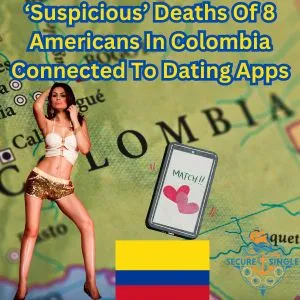What You Need To Know About WHO’s Single Disability
The World Health Organization has listed being single as a disability under their definition of infertility. How can being single mean that a man or woman is infertile? It may just be the case that an individual is waiting for the one.
The World Health Organization is making an assumption that single people are disabled, which makes single people infertile. This statement does not account for out of wedlock single parents, common law marriage, teen pregnancies, divorcees, or widowers – of which, many have children. Because the definition is so broad, it would extend to children and our elders, which is also odd to comprehend as a disability. However, the WHO does define infertility as “[the] disease of the reproductive system defined by the failure to achieve a clinical pregnancy after 12 months or more of regular unprotected sexual intercourse.” The definition of infertility is now written in such a way that it includes the rights of all individuals to have a family, and that includes single men, single women, gay men, and gay women.
For technicalities, wouldn’t this exclude a person’s lifestyle choice and not their inability to conceive? The WHO pushes the issue even further as of late fall 2016 by revising their definition of infertility, according to the Telegraph:
“Single men and women without medical issues will be
classed as ‘infertile’ if they do not have children.”
Snopes noted that the WHO will declare that a person’s choice to be single should no longer be regarded as simply a medical condition is unproven. However, the WHO remains firmly committed to the principles set out in the preamble to the Constitution of the World Health Organization, who’s statement about singleness as an infertile disability is in accordance with one of the first principles:
- Health is a state of complete physical, mental and social well-being and not merely the absence of disease or infirmity.
- The enjoyment of the highest attainable standard of health is one of the fundamental rights of every human being without distinction of race, religion, political belief, economic or social condition.
- The health of all peoples is fundamental to the attainment of peace and security and is dependent on the fullest cooperation of individuals and States.
- The achievement of any State in the promotion and protection of health is of value to all.
- Unequal development in different countries in the promotion of health and control of diseases, especially communicable disease, is a common danger.
- Healthy development of the child is of basic importance; the ability to live harmoniously in a changing total environment is essential to such development.
- The extension to all peoples of the benefits of medical, psychological and related knowledge is essential to the fullest attainment of health.
- Informed opinion and active co-operation on the part of the public are of the utmost importance in the improvement of the health of the people.
- Governments have a responsibility for the health of their peoples which can be fulfilled only by the provision of adequate health and social measures.
According to the WHO website, the WHO Constitution was adopted by the International Health Conference held in New York from 19 June to 22 July 1946, signed on 22 July 1946 by the representatives of 61 States and entered into force on 7 April 1948.
Even though the statements from the WHO are just words, they are just as demeaning as racism and negative LGBT slurs. The statements from the WHO are closely a legislative slap in the face. Supportive conspirators defended the disability claim as a revised definition that every individual currently has “the right to reproduce”. How would both statements coincide? The WHO’s definition of single persons being disabled does not bar single people from producing children, but rather it is an odd and extremely broad definition. People who have a disability generally have the right to do as they please but are barred because of their disability. According to the CDC.gov, the number of live births to unmarried women is 1,601,527, which breaks down to a birth rate for unmarried women to be 43.4 births per 1,000 unmarried women aged 15-44 years. So, approximately the percentage of all births to unmarried women is 40.3%. This statistic is pretty shocking.
There are some benefits to the WHO’s definition of single-disability. The Telegraph stated, “Under the new terms, heterosexual single men and women, and gay men and women who want to have children would be given the same priority as couples seeking IVF because of medical fertility problems.The WHO’s decision is likely to place pressure on the National Health Service to change their eligibility standards concerning in vitro fertilization.”
Having a lifestyle choice to be single should not be deemed a medical disability. However, this ‘disability’ can benefit single people who want children. It is a legislative slap in the face and marginally demeaning definition for single people across the globe. To find out more information on the WHO, check out their website and send an email to their office if the statement of singles being a disability offends you.
Views expressed in this article are the author’s opinions and do not necessarily reflect the views of Secure Single. It is intended for informational and educational purposes only. It is not investment or financial advice. James Bollen is the author of Thriving Solo: How to Flourish and Live Your Perfect Life (Without A Soulmate). Now available in paperback and for the Kindle on Amazon. Subscribe to Secure Single’s Substack for free!

